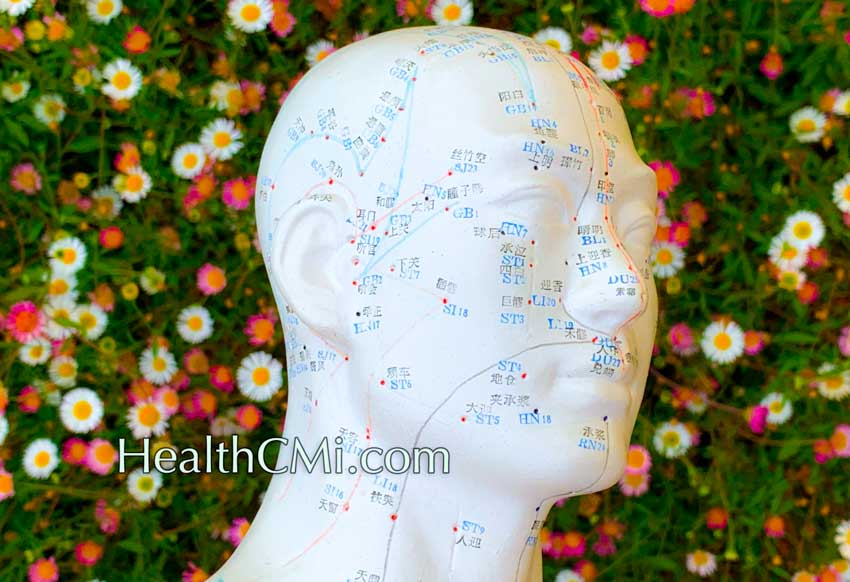
Electroacupuncture is effective in improving the quality of life and mental symptoms in patients withdrawing from amphetamine-type stimulants (ATS). Researchers from Yueyang Hospital of Integrated Traditional Chinese and Western Medicine (affiliated to Shanghai University of Traditional Chinese Medicine and Shanghai Institute of Rehabilitation for Drug Addiction) conducted a clinical trial assessing the efficacy routine detoxification care and adding electroacupuncture to the regular treatment of patients abstaining from ATS. The latter produced superior outcomes demonstrating that the addition of acupuncture produces superior patient outcomes. [1]
Practitioners used the following measurement parameters during the study: amphetamine withdrawal questionnaire (AWQ), positive and negative syndrome scale (PANSS), quality of life for drug addicts scale (QOL-DA). The researchers analyzed the scores and compared them between the two groups at T0 (before treatment), T1(one week after treatment commenced), T2 (two weeks after treatment commenced), and T3 (at the end of the treatment).
The researchers organized the study in the following manner. The study began with a group of 88 rehabilitation patients admitted to Shanghai Rehabilitation Center. The researchers randomly divided the group of 88 into two groups of 44. The control group followed the routine course for natural detoxification and rehabilitation, while the other group not only followed the routine protocols, but also received electroacupuncture.
Patients were included in the study based upon the Diagnostic and Statistical Manual of Mental Disorders (DSM-V). All patients had a history of drug abuse of over three months, and their addictions lasted for more than six months. The patient age range was18 to 60 years. All of the patients entering the study were males and exhibited symptoms of withdrawal. The control group solely followed the natural rehabilitation group, they first went through acute detoxification and then were provided nutritional support and skills training. The electroacupuncture group not only adhered to the natural detoxification program, but also added electroacupuncture to their treatment. The following points were used for in their needling treatment:
- EX-B2: T5 (Jiaji)
- BL23 (Shenshu)
- PC6 (Neiguan)
- HT7 (Shenmen)
- ST36 (Zusanli)
- SP6 (Sanyinjiao)
Patients faced the back of a chair and took a seated position. Practitioners used needles measuring 0.25 × 40 mm; upon achieving a deqi sensation, they linked Jiaji and Shenshu on the same side to an electroacupuncture device. Jiaji (T5) was connected to the positive electrode while Shenshu was connected to the negative electrode. The device applied a continuous wave with the frequency set at 2 Hz. The intensity was set to the patients’ tolerance level. The treatment lasted for 20 minutes and occurred three times per week, on Monday, Wednesday, and Friday. Patients received 10 treatment sessions in total. HealthCMi authors do not recommend the T5 electroacupuncture run do to proximity to the heart, although this research team reported no adverse effects.
The patients who additionally received electroacupuncture demonstrated significantly greater overall results than those who solely adhered to the routine rehabilitation protocols. After week 2 and 3, the AWQ scores for the electroacupuncture treatment group were lower than that of the control group. At T1, T2, and T3, the total score of PANSS, and the scores of positive scale and general psychopathological scale for both groups decreased compared with the scores before treatment.
The scores of the negative scale in PANSS for the electroacupuncture group also decreased alongside the control group after 3 weeks of treatment; the positive scale score of the EA treatment group was lower than that of the control group (superior outcomes with acupuncture). The total score, scores of negative scale, and general psychopathological scale in the EA treatment group were lower than those in the control group. At T1, T2 and T3, the QOL-DA scores of the EA (electroacupuncture) treatment group increased, and the score of the EA treatment group was higher than that of the control group. The patients that received electroacupuncture in conjunction with the regular protocols demonstrated greater results in all of the measurement parameters.
Reference:
[1] Yu Jie, Liang Yan, Gu You, Kong Jingyi, Shi Daqing, Xu Chayue, Chen Huijia, Clinical study of electroacupuncture intervention on mental symptoms and quality of life in amphetamine⁃type stimulant abstainers,Academic Journal of Shanghai University of Traditional Chinese Medicine Vol. 37 No.1, Jan. 2023.


